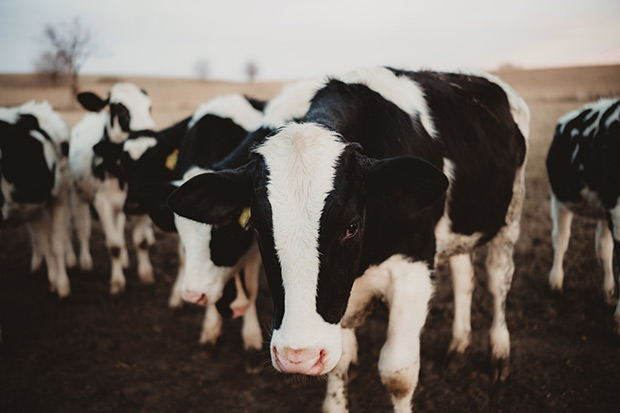States begin to restrict cattle imports from those with influenza cases

States begin to restrict cattle imports from those with influenza cases
In an effort to prevent domestic cattle from being exposed to highly pathogenic avian influenza virus (HPAI, more specifically avian influenza Type A H5N1), 17 states have restricted cattle importations from states where the virus is known to have infected dairy cows: Alabama, Arizona, Arkansas, California, Delaware, Florida, Hawaii, Idaho, Kentucky, Louisiana, Maryland, Mississippi, Nebraska, North Carolina, Pennsylvania, Tennessee, Utah, and West Virginia.
The U.S. Department of Agriculture’s (USDA) Animal and Plant Health Inspection Service (APHIS) will not be issuing federal quarantine orders at this time, nor is the agency recommending any state quarantines or official hold orders on cattle, the agency announced April 2.
“However, we strongly recommend minimizing movement of cattle as much as possible, with special attention to evaluating risk and factoring that risk into movement decisions. Do not move sick or exposed animals.”

If cattle must be moved, then APHIS strongly encourages “extreme diligence” by producers, veterinarians, and animal health officials to ensure only healthy cattle are moving and to ensure the validity of interstate health certificates.
WOAH, WHO, and CDC announcements
The World Organization for Animal Health (WOAH, formerly the OIE) said in an April 5 announcement that the ongoing spread of HPAI in different regions of the world, alongside the recent detections of cases in cattle, is raising concerns within the international community that such infections in cattle could indicate an increased risk of H5N1 viruses becoming better adapted to mammals, and potentially spilling over to humans and other livestock.
“Initial investigations so far have revealed no specific adaptation to either humans or mammals,” the announcement states. “Regardless, several studies are being carried out to further explore the virulence and transmissibility of these viruses, including among cattle, and to assess the risk of transmission to animals and humans, which is currently considered very low.”
Yet, WOAH stopped short of endorsing restrictions on the movement of healthy cattle and their products, saying this is not recommended unless justified by an import risk analysis conducted according to WOAH guidelines.
Rather, the international animal health organization shared the following recommendations:
- Maintain enhanced avian influenza surveillance in domestic and wild birds.
- Monitor and investigate the cases in nonavian species, including cattle and other livestock populations showing clinical signs compatible with avian influenza.
- Report cases of HPAI in all species, including unusual hosts, to WOAH through its World Animal Health Information System (WAHIS). Genetic sequences of avian influenza viruses should be shared in publicly available databases.
- Prevent the introduction and spread of the disease by implementing strict biosecurity measures in livestock holdings and employing good production practices when handling animal products such as raw milk and meat from suspected or confirmed cases.
- Protect humans in close contact with or handling sick cattle or other sick livestock and their products. Exposed humans should always take precautionary measures, including wearing personal protective equipment (PPE) and implementing standard food safety measures when handling animal products from exposed livestock.
- Avoid implementing unjustified trade restrictions. Import risk management measures should be scientifically justified and in line with the WOAH International Standards.
On the same day, the Centers for Disease Control and Prevention (CDC) issued a series of public health recommendations in light of the recent HPAI activity. The guidance covers several areas, including preventing exposures to HPAI viruses, the use of PPE, antiviral treatment, patient investigations, and use of antiviral chemoprophylaxis of exposed persons.
Previously, the CDC reported that a farm worker on a commercial dairy farm in Texas had developed conjunctivitis around March 27, and subsequently tested positive for HPAI A(H5N1) virus infection. HPAI A(H5N1) viruses have been reported in the area’s dairy cattle and wild birds. There have been no previous reports of the spread of HPAI viruses from cows to humans.
As of April 15, the USDA's National Veterinary Services Laboratory (NVSL) says that HPAI has been confirmed in dairy cattle in eight states: 11 herds in Texas, six in New Mexico, four in Michigan, three in Kansas, and one each in Idaho, North Carolina, Ohio, and South Dakota.
The affected Ohio dairy operation is known to have received cows from a Texas herd later confirmed to be infected with HPAI. And while the Michigan and Idaho dairy herds received cows from states with HPAI-infected cattle, it was not yet known whether these imported cattle originated from infected herds.
The World Health Organization (WHO) said in an April 9 statement that people should avoid unprotected exposures to sick or dead animals, including wild birds, poultry, other domesticated birds, and other wild or domesticated animals, as well as with animal feces, litter, or materials contaminated by birds or other animals with suspected or confirmed HPAI A(H5N1) virus infection.
In addition, the WHO information states, “People should not prepare or eat uncooked or undercooked food or related uncooked food products, such as unpasteurized (raw) milk, or raw cheeses, from animals with suspected or confirmed HPAI A(H5N1) virus infection (avian influenza or bird flu).”
Bovine influenza A virus
Meanwhile, the American Association of Bovine Practitioners (AABP) announced April 7 that it will call this disease bovine influenza A virus (BIAV) to better distinguish the disease syndrome in cattle from the pathogenesis observed in birds.
“The virus isolated from affected animals in herds matching the clinical syndrome has been identified as avian influenza virus Type A H5N1. This virus causes Highly Pathogenic Avian Influenza in birds, however the disease syndrome in cattle does not cause high morbidity and mortality as it does in birds. The AABP does not believe that this disease should be referenced as ‘HPAI in cattle’ or ‘bird flu in cattle’ due to these differences,” according to the press release.
